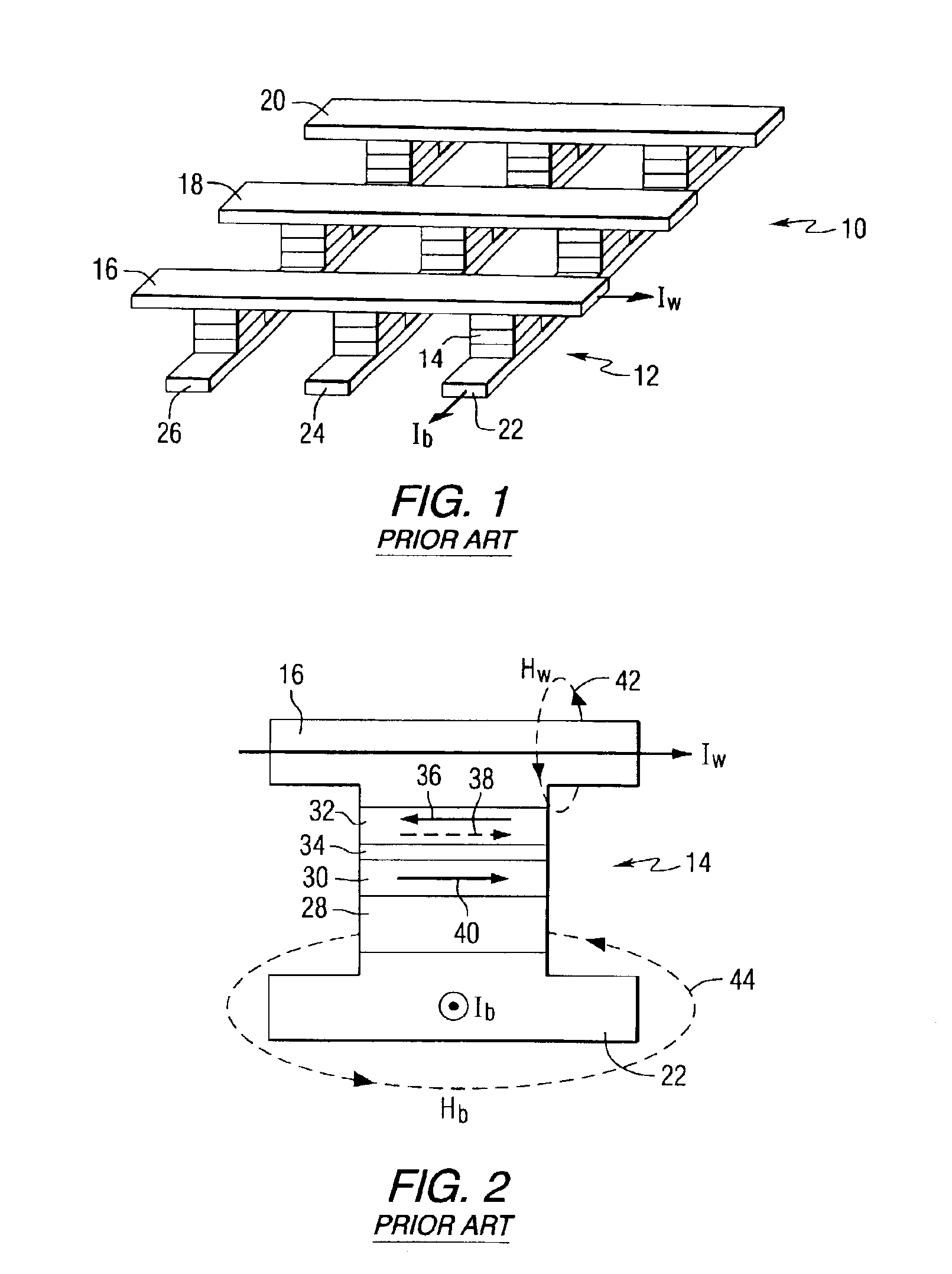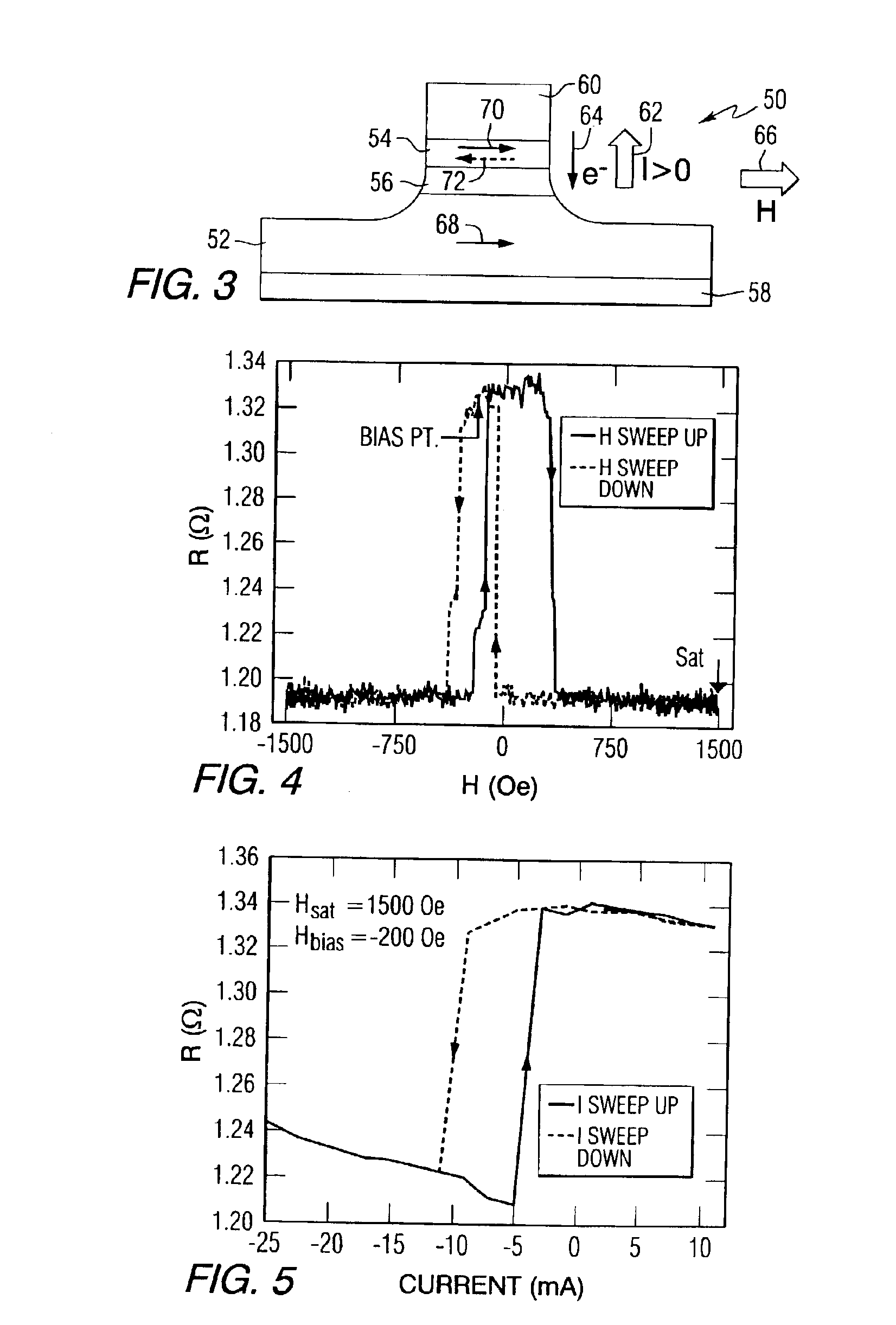Magnetic random access memory having flux closure for the free layer and spin transfer write mechanism
a random access memory and free layer technology, applied in the field of magnetic random access memories, can solve the problems of limiting the cell packing density, unable to reach the commercial market, and the stabilization of a finite moment fl into a single domain state,
- Summary
- Abstract
- Description
- Claims
- Application Information
AI Technical Summary
Problems solved by technology
Method used
Image
Examples
Embodiment Construction
Referring to the drawings, FIG. 1 is a schematic representation of a conventional magnetic random access memory 10. MRAM 10 includes a 3×3 array of cells 12 that are a subset of the total number of cells comprising the MRAM device. Every cell contains one MR element 14. There are two roughly orthogonal sets of electrical wires, referred to as word lines 16, 18 and 20, and bit lines 22, 24 and 26, that overlap the MR elements. A bit is written only at the intersection of the word and bit lines that have current flowing through them.
FIG. 2 is a cross-sectional view of a MR element 14, which for this particular example is a magnetic tunnel junction. The MR element is connected between a word line 16 and a bit line 22, and includes an antiferromagnetic layer 28, a pinned layer 30 positioned on the antiferromagnetic layer, a free layer 32, and a nonmagnetic layer 34 between the pinned layer and the free layer. The arrows 36 and 38 in the free layer, and arrow 40 in the pinned layer indic...
PUM
 Login to View More
Login to View More Abstract
Description
Claims
Application Information
 Login to View More
Login to View More - R&D
- Intellectual Property
- Life Sciences
- Materials
- Tech Scout
- Unparalleled Data Quality
- Higher Quality Content
- 60% Fewer Hallucinations
Browse by: Latest US Patents, China's latest patents, Technical Efficacy Thesaurus, Application Domain, Technology Topic, Popular Technical Reports.
© 2025 PatSnap. All rights reserved.Legal|Privacy policy|Modern Slavery Act Transparency Statement|Sitemap|About US| Contact US: help@patsnap.com



